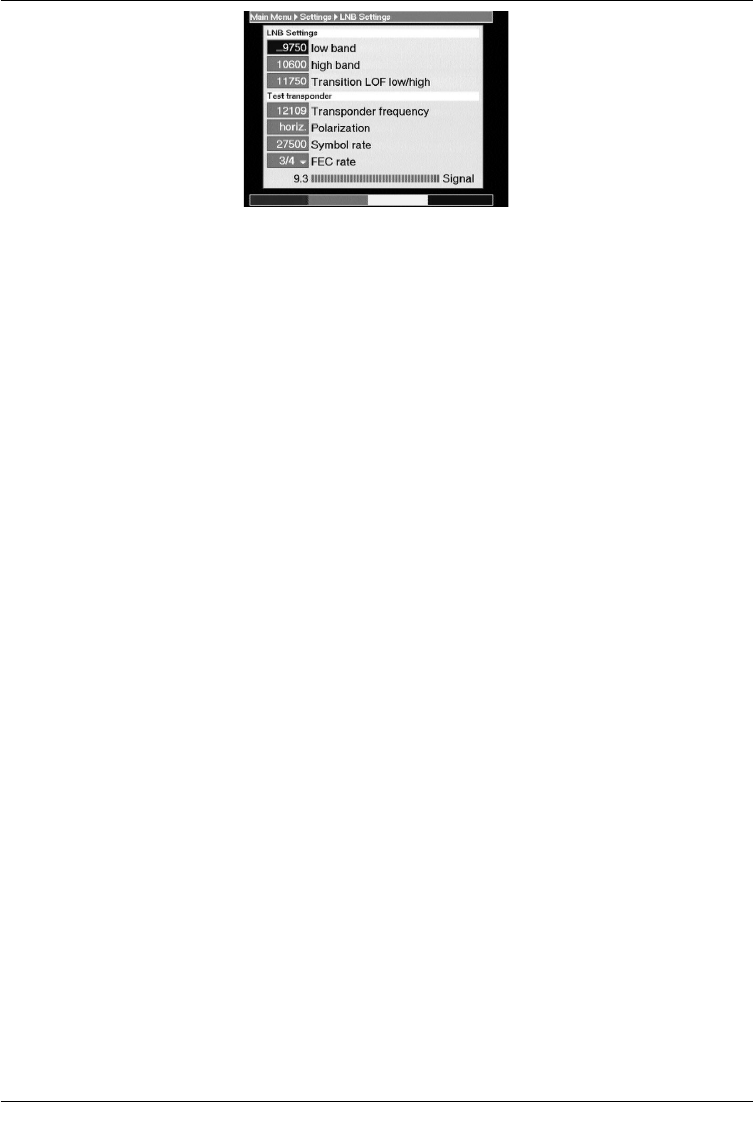
The following settings may be made:
LOF low band
LOF (Local oscillator frequency) is the frequency used by an LNB to convert the frequency
received into the so-called 1. Intermediate Frequency, which can then be interpreted by the
receiver. So-called Universal LNBs operate with 2 LOFs, in order to cover the entire recepti-
on range of from 10.7 to 11,8 GHz (low-band) and from 11,7 to 12,75 GHz (high band).
When this line is marked, use the numeric keys to enter the LOF frequency of the low band
of your LNB.
LOF high band
When this line is marked, use the numeric keys to enter the LOF frequency of the high
band of your LNB.
Switchover LOF low/high
When this line is marked, use the numeric keys dto enter the frequency at which your
LNB switches over from low-band to high-band.
Transponder test
The following points of this menu should only be entered if you want to test the satellite sig-
nal by means of a self-configured satellite (User 1 to 14).
Transponder frequency
When this line is marked, use the numeric keys to enter a frequency on which digital pro-
grammes are broadcast.
Polarisation
Use the arrow up/down keys to enter the desired polarisation plan (horizontal or verti-
cal).
Symbol rate
The symbol rate expresses the volume of data transmitted per second. This could be, for
instance, 27500 (27500 symbols per second). Use the numeric keys to enter the appro-
priate symbol rate.
FEC Rate
Press the OK key to display a window, in which you can use the arrow up/down keys to
select the desired FEC rate (1/2, 2/3, 3/4, 5/6, 6/7 or 7/8).
If you do not know the FEC rate, select Auto in this line.
Press the OK key to accept this setting.
Signal
If you have entered the information relating to the test transponder correctly, this line will dis-
play the signal strength.
15
DIGIBOX1_englisch.qxd 26.09.01 09:55 Seite 15


















